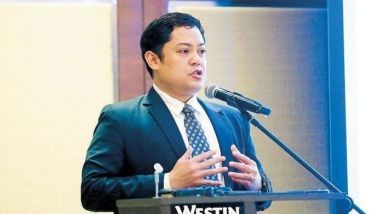Plugging the pipeline: Better safe than sorry? (Last of two parts)
MANILA, Philippines - A month later, FPIC got reports of continuous seepage in the Basement 4 sump pit of West Tower. FPIC engaged the services of two geo-specialists Geotechnics and Geoanalytics to do ground penetrating radar (GPR) tests of the area.
Results submitted by the geo-specialists revealed that “no metal loss areas that would indicate any leaks are present” and “no crack that would indicate any leaks are present.”
FPIC continued to work with the Makati City government and on Oct. 8, it requested permission to excavate for areas for verification.
On Oct. 17, the University of the Philippines-National Institute for Geological Sciences (engaged by Makati City) started drilling exploratory wells and found traces of petroleum in several bore holes.
FPIC again voluntarily shut down the pipeline. UP-NIGS continued to bore holes in the south area while FPIC started excavation works on the northside.
UP-NIGS detected a high level of LEL in the service road beside the Magallanes flyover on Oct. 27 and FPIC immediately shifted excavation to the Magallanes ramp. After excavating from Oct. 28 to Nov. 7, FPIC finally found the source of the leak.
Environmental remediation
FPIC has since completed repair works and has tapped CH2M Hill, a global leader in consulting, design, design-build, operations and program management, to assess and come up with an environmental clean-up program.
CH2M Hill offers a full range of environmental engineering, consulting, and construction services including site remediation, contaminated sediment services, ecosystems management, waste management, among others.
“We will present this (environmental program) to the affected stakeholders... and after that it’s for implementation,” Mabasa said.
Mabasa said FPIC is also looking at constructing a bypass line to prevent a repeat of the pipeline leak in the Magallanes area.
“Plans are currently being finalized to construct a permanent pipeline bypass but this time constructed away from the Magallanes flyover,” he said.
The continued shutdown of the pipeline has affected severely the operations of Shell and Chevron to deliver supply to their Metro Manila customers.
Pipeline remains best option
Shell said the shutdown of the pipeline is unsustainable and it maintained that “the pipeline is still the safest, most reliable and efficient mode of transportation for petroleum products.”
UP-NIGS director Carlo Arcilla agreed that the pipeline is still the best alternative over the thousands of trucks plying the roads of Metro Manila due to the hazards posed by these trucks.
Arcilla told a Senate hearing that based on his initial study, the pipeline is safe and needs to be checked only on some sensitive areas which he has already identified as part of his study for Makati City.
“Will I be comfortable with the pipeline working again? Sure. I’ve seen the pipeline. I’ve seen the repairs done. I would prefer the pipeline over the thousands of trucks plying the streets,” Arcilla was quoted as saying.
The pipeline is preferred as the best means to transport fuel from Batangas to Manila because of the lower delivery cost compared with other transport modes. It is not affected by typhoon, flooding, tidal changes, traffic and truck ban.
It offers on-time delivery of products and the quality of the products are preserved (low risk of contamination which is critical for airline fuel).
- Latest
- Trending






























